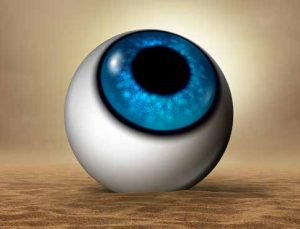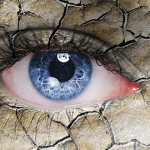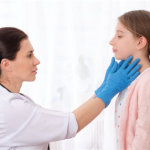 CHICAGO—“Sjögren’s has proven to be one of our most difficult to diagnose autoimmune rheumatic diseases,” began Frederick B. Vivino, MD, MS, director of the Penn Sjögren’s Syndrome Center, chief of rheumatology at Penn Presbyterian Medical Center and professor of clinical medicine at the Perelman School of Medicine at the University of Pennsylvania, as he opened the session on Sjögren’s syndrome at the 2018 ACR/ARHP Annual Meeting on Oct. 21. Many rheumatologists gathered in the large auditorium, with some forced to sit on the floor to learn about these issues. Dr. Vivino noted that although there is a defined classification for Sjögren’s syndrome, clinicians still face practical challenges in making an accurate diagnosis. In addition, gaps and challenges exist in treating local and systemic manifestations of Sjögren’s syndrome.
CHICAGO—“Sjögren’s has proven to be one of our most difficult to diagnose autoimmune rheumatic diseases,” began Frederick B. Vivino, MD, MS, director of the Penn Sjögren’s Syndrome Center, chief of rheumatology at Penn Presbyterian Medical Center and professor of clinical medicine at the Perelman School of Medicine at the University of Pennsylvania, as he opened the session on Sjögren’s syndrome at the 2018 ACR/ARHP Annual Meeting on Oct. 21. Many rheumatologists gathered in the large auditorium, with some forced to sit on the floor to learn about these issues. Dr. Vivino noted that although there is a defined classification for Sjögren’s syndrome, clinicians still face practical challenges in making an accurate diagnosis. In addition, gaps and challenges exist in treating local and systemic manifestations of Sjögren’s syndrome.
Diagnosis
Alan N. Baer, MD, director of the Jerome L. Greene Sjögren’s Syndrome Center at Johns Hopkins University School of Medicine in Baltimore, gave the first presentation. He began by reviewing the diagnosis of Sjögren’s syndrome. He agreed with Dr. Vivino that Sjögren’s is the most difficult rheumatic disease to diagnose. Moreover, he emphasized that accurate diagnosis is a prerequisite for appropriate management with existing and emerging targeted therapies. “It does matter,” he said, adding, “We need to move as far as we can toward an accurate diagnosis in order to advance the field.”
Sjögren’s syndrome, a chronic systemic autoimmune disease, is characterized by lacrimal and salivary gland inflammation with resultant dryness of the eyes and mouth. Most (94%) patients are women with a mean age of 52 years. “This is the rheumatic disease with the highest female preponderance,” added Dr. Baer. Most patients have a positive lip biopsy, and three-quarters of patients have anti-Sjögren’s syndrome-related antigen A (anti-SSA A) and/or anti-SSB positivity, meaning that seropositive Sjögren’s is clearly predominant. He explained that clinicians can use ocular surface staining and/or Schirmer test to assess dry eyes.
Healthcare providers should suspect Sjögren’s if a patient presents with sicca symptoms or their consequences. These symptoms will likely be persistent daily features for patients with Sjögren’s syndrome. Patients may also be referred for evaluation of possible Sjögren’s because of distinctive extraglandular manifestations, such as small fiber sensory neuropathy, renal tubular acidosis and/or interstitial pneumonitis. Other features that should trigger clinical suspicion are salivary gland enlargement and, of course, positivity for SSA or SSB antibodies.
Dr. Baer advised the audience that a diagnosis of Sjögren’s is tenable if two of the following three features are present:
- Objective evidence of dry eyes and/or dry mouth;
- Evidence of systemic autoimmunity; and/or
- Characteristic salivary gland histopathology or imaging abnormalities.
He cautioned, however, that clinicians should also be sure to exclude mimics and confounders, such as an adverse effect from multiple medications, anticholinergic effects from medications and other diseases that can affect salivary glands (e.g., sarcoidosis, IgG4-related disease, graft vs. host disease).
Dr. Baer concluded his presentation by stating that an accurate diagnosis of Sjögren’s syndrome is essential for the successful management of the patient. A diagnosis requires multiple tests that must be performed according to published protocols. Dr. Baer also noted that because existing diagnostic tests are imperfect, their results require careful interpretation. Both diagnosis and management require multidisciplinary collaboration.
Treatment Review
Arthur Bookman, MD, coordinator of the Multidisciplinary Sjögren’s Clinic at the University of Toronto in Canada spoke next. He began by reviewing treatments for the ocular manifestations of Sjögren’s syndrome. He noted that although most clinicians will begin by treating the symptoms of dry eye and dry mouth, there is a poor correlation between these symptoms and objective measurements. In fact, one study found that only 27% of patients with Sjögren’s syndrome could be classified as sensitive to ocular dryness and 9% sensitive to oral dryness. Because of this, measures of function, such as the Schirmer’s test, ocular staining and salivary flow can be helpful in the topical management of dry eyes and dry mouth.
The symptoms of dry eye can include a foreign body sensation, photophobia and burning. Physicians should be aware that there are other possible reasons for these symptoms. Possible contributors could include incomplete lid closure—as seen in entropion with trichiasis, ectropion, exophthalmia and VII nerve palsy. Patients may also experience symptoms from allergies, preservatives in tear substitutes and corneal abrasion.
Moreover, Dr. Bookman mentioned that patients who present with the sense of gravel caught in the eyes and photophobia could have either dry eyes or blepharitis. Because blepharitis is the most common differential diagnosis in Sjögren’s syndrome, Dr. Bookman wanted to draw the audience attention to it so that they could recognize it and treat it appropriately.
Blepharitis occurs when oil glands at the margins of the eyelids are dysfunctional or plugged, causing the eyelids to become irritated and not close appropriately. Patients may also have scaling of the eyelashes, and they may complain of great distress that is only temporarily alleviated with artificial tears. Recommended treatments include hot compresses and lid scrubs with diluted baby shampoo. There are also liposomal sprays that can be sprayed on a closed eyelid. In general, he noted that optometrists can be very helpful in the management of blepharitis.
Dr. Bookman also suggested that optometrists can be helpful in navigating the multiple tear substitutes on the U.S. market, many of which come in individual-use and multi-use vials.
In general, systemic drugs do not help with dry eye and dry mouth, and thus, clinicians need to rely on local treatment options. Systemic drugs, such as rituximab, may, however, be effective for extra-glandular disease and other symptoms of Sjögren’s. Criteria have been developed for better patient selection and more appropriate outcome measures for the many clinical trials currently underway. In this way we can position patients to benefit as new drugs become available.
Coordination of Care
The speakers agreed that, not only is the diagnosis of Sjögren’s syndrome difficult, but the treatment of patients with Sjögren’s syndrome can be complex. “Many specialists are required, and someone needs to coordinate them. That’s your job,” emphasized Dr. Bookman.
Lara C. Pullen, PhD, is a medical writer based in the Chicago area.

